Today, June 16
th is internationally known as Bloomsday, a day which celebrates the author James Joyce, his book Ulysses and the locations and buildings mentioned in it.
So let’s go and take a trip to some of the places in Dublin mentioned in the book – you can find out how to get there yourself in person via using the Geo-Findit app, which contains the most comprehensive list of public transport routes, venues to eat and drink in or parks to have a summer stroll around. Download the app for free in the
App Store or on
Google Play.
Sandycove
.jpg?lang=en-IE&width=300&height=200)
The opening scene in the book takes place in a Martello Tower, in the south Dublin suburb of Sandycove, a place where the characters Stephen Dedalus, Buck Mulligan and Haines resided.
It is now a museum dedicated to the great book and well worth a visit on a summer’s day.
While today the area is a maze of narrow streets and houses, back when the book was written this area was mostly farmland, pockmarked by the odd stately house where people of some renown would have lived.
Sandymount Strand
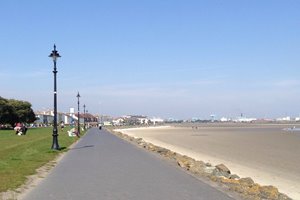
Another part of Dublin that features in the book is Sandymount Strand. Today this area would today be chock a block with traffic, but back in the era of the book, it would be quite a sight to have witnessed a motor car, so rare were they back then. You would more likely have seen the likes of peak capped boys with goods for delivery in the big basket of their High Nelly bicycle, or ladies in expensive looking hats adorned with flowers and/or feathers and deep in conversation as they passed by.
It was along the strand that the “snot green sea” – which the erstwhile schoolteacher Stephen Dedalus also filled his nostrils with – one would today spot the famous chimney’s from the Pidgeon House. Back in his time it was a hotel, before being bought by the ESB and used as a Power Station from 1929 til 1976.
In the summertime, one might have partaken in a Punch and Judy show or a travelling circus, before grabbing an ice-cream on the way home as the rasping sound of the Seagulls echoed in tandem with the waves.
These days those sounds will often be joined by the annoying buzzing noise created by a drone taking aerial images from above.
Irishtown
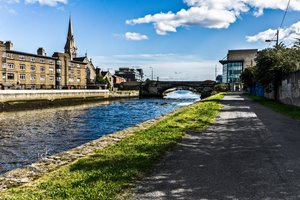
Just up the road from Sandymount Strand is another part of Dublin referenced in the book – Irishtown. This area contains church buildings and Public Houses that are as old as time, many the same structures Leopold Bloom viewed as the horse drawn carriage clip-clopped its way towards Glasnevin Cemetery in a cortege led by a the hearse containing the coffin of “old Mr. Dignam”.
Back then Bloom might have witnessed the pitter patter of an old lady in her shawl carrying a quart of ale in a jug and a piece of butter home, nowadays it’s more likely to be someone carrying a slab of Heineken.
Glasnevin Cemetery
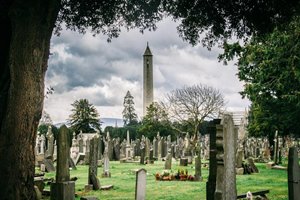
The next reference point of the book we visit is Glasnevin Cemetery, with its imposing towers, built so that guardians of the cemetery could keep an eye out for the dreaded ‘bodysnatchers’ when it opened.
In those days without preservation methods of today at their disposal, fresh organs to conduct medical examinations were highly prized by the medical teaching colleges in Dublin. Thus a pretty penny could be earned by illicitly digging up a body from its burial site and delivering it to a medical school.
Capel Street
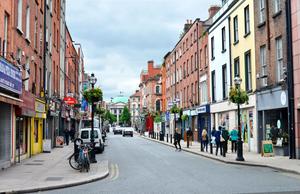
Next we will go to the area featured in the famous “Cyclops” chapter in the book. This scene is set inside Barney Kiernan’s Public House, which occupied numbers 8-10 Great Britain Street, which is located just off Capel Street.
As we think back on that part of the book it might transport you to a time when you too won a princely sum on a horse, just like Leopold Managed to do. The bottom of the street brings you into the food market area of the city, which would have traversed a far wider area in 1920’s Dublin than it does now.
Foley Street
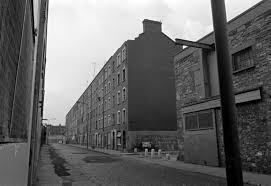
A rather notorious episode in the book takes place in what was then Montgomery Street - now named Foley Street - which is today the site of offices, apartment blocks and a Dublin City council Community building known as “the Hub”.
At the time the book was written, this area was a famous Red-Light district in Dublin where many a sailor or soldier disembarking off a boat would go to for a bit of a good time with one of the main in house or pavement hostesses that plied their trade along it’s dingy dimly lit lanes. And as we find out in the book, so did Messrs Dedalus and Bloom.
The area was once and for all ‘cleaned up’ in 1925, when the recently formed Legion of Mary; founded by a devoted Catholic Civil Service worker, Frank Duff, launched a very visible crusade culminating in a big march through the area, where they nailed pictures of The Sacred Heart to the doors of the various brothels.
Foley Street concludes our trip through James Joyce’s Dublin on this Bloomsday. Having ready it, might you fancy visiting your local butcher to pick up some Kidney’s and Crubeens?
Let us know if you enjoyed this blog.